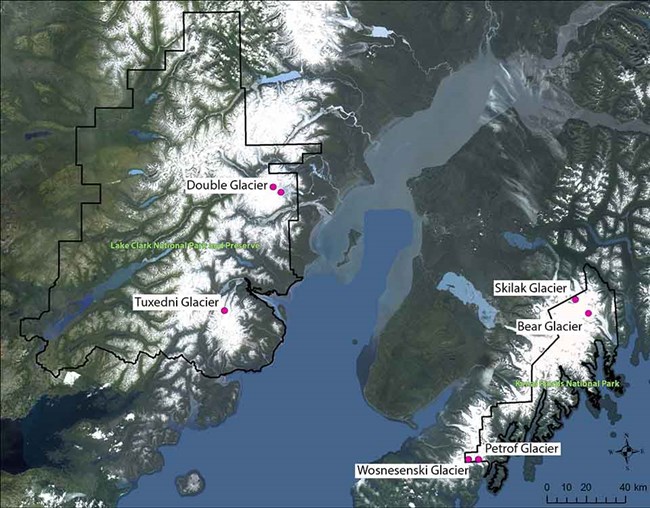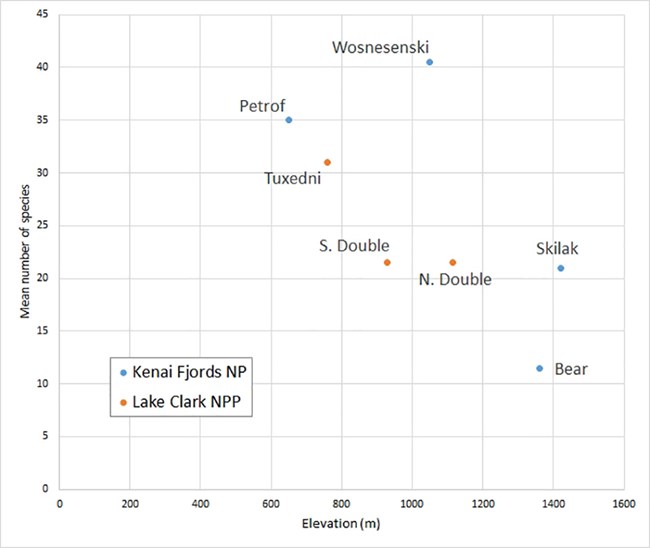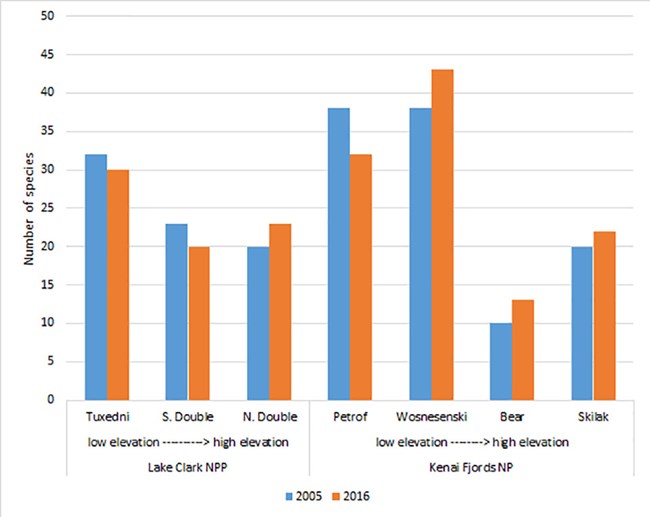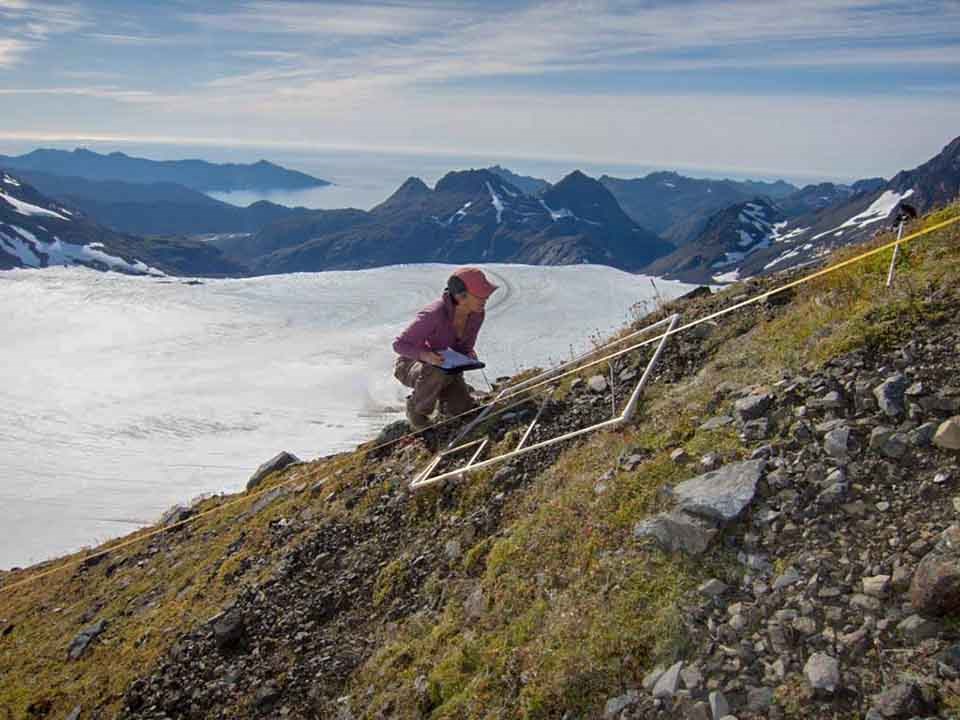Last updated: December 30, 2019
Article
Nunatak Monitoring
Shifts in the composition and structure of sensitive plant communities may provide early indication of change. Subtle changes in the environment may have significant long-term effects on communities that are strongly controlled by physical factors (e.g., hydrology, snow cover) or occur at the edge of their range. Among the sensitive communities targeted for monitoring in Southwest Alaska parks are nunataks, alpine ridges surrounded by ice. Nunataks are of interest due to their geographic isolation, their expected sensitivity to environmental change (Jørgensen et al. 2011), and the possibility that some of these sites may have supported populations that survived the Last Glacial Maximum (Late Wisconsin), approximately 20,000 years bp (Manley 2002). In addition to serving as refugia for rare species, nunataks may also play a role in the re-establishment of species into recently deglaciated areas.

Findings
Nunatak monitoring sites were established in Lake Clark National Park and Preserve and Kenai Fjords National Park in 2005 and resurveyed in 2016 (Figure 1). Several of the sites are characterized by well-developed soils and a suite of species that suggests they could have been ice-free for millennia. Rare taxa include several Rocky Mountain disjuncts (e.g., Lemmon’s rockcress, Boechera lemmonii; rayless arnica, Arnica diversifolia; Drummond’s cinquefoil, Potentilla drummondii); Pacific coastal species (e.g., dunhead sedge, Carex phaeocephala), and Alaska-Yukon endemics (e.g., Alaska rock jasmine, Douglasia alaskana; pale poppy, Papaver alboroseum).


References
Jørgensen, T., K. H. Kjær, J. Haile, M. R. Rasmussen, S. Boessenkool, K. Andersen, E. Coissac, P. Taberlet, C. Brochmann, L. Orlando, M. T. P. Gilbert, and E. Willerslev. 2011. Islands in the ice: detecting past vegetation on Greenlandic nunataks using historical records and sedimentary ancient DNA meta-barcoding. Molecular Biology 12(8):1980-1988.Manley, W. 2002. Alaska PaleoGlacier Atlas. National Park Service, Alaska Region, Anchorage, AK.
